Time and time again we see users on forums and social media complaining that managed WordPress hosting is a big waste of money. Their reason? It’s much better to manage your own server. Unfortunately, they never mention what all this actually entails. To a casual WordPress user, this can definitely give the wrong impression. It sounds easy and cheap, but the end result is you’ll probably end up spending a lot more time and money than you think.
You’re probably thinking, “You guys are an application, database, and managed WordPress hosting company, so aren’t you a little biased?” Perhaps, but we also have the advantage of seeing the perspective of both sides.
We have sysadmins on the Kinsta team that manage all of our own servers for clients, and therefore, we know what it takes to do this properly and why for most of you, being a sysadmin is actually a bad idea. In fact, in some scenarios, it can be a downright nightmare. Being a sysadmin takes a lot of patience, skill, and you have to really enjoy fixing things that break!
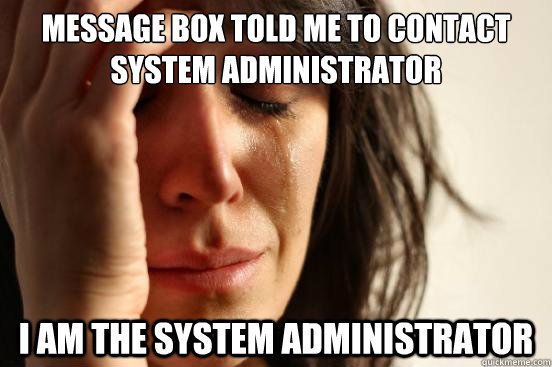
Besides our own team, we also get to see all the feedback from clients who have previously tried to manage everything themselves. Once they arrive at a host like Kinsta, the answer is almost always, “It’s worth every penny.”
If you’re contemplating between managing your own server (being a sysadmin) or going with a hosting provider, this article is for you! Below we’ll dive into all the advantages and disadvantages. Yes, there is good and bad on both sides.
What is a Sysadmin?
A systems administrator, or sysadmin, is a person responsible for configuring, updating, and keeping servers running and operational. We have sysadmins at Kinsta working 24/7 behind the scenes to ensure everything runs smoothly. When a server goes down, it’s the sysadmin’s job to troubleshoot the cause and bring it back up.
Anyone to an extent can be a sysadmin. It doesn’t necessarily mean they are a good one or should be doing it. 😉 But if a person is responsible for the management of the servers where their sites are hosted, then most likely they are doing the tasks of a sysadmin. We’ll go into all the responsibilities that typically come with this below.
Advantages of Being a Sysadmin
Right off the bat, you can probably tell we have a pretty strong opinion about this topic. But don’t get us wrong, being a sysadmin isn’t all bad. In fact, it definitely has some advantages over that of using a managed WordPress host.
However, it definitely takes a certain type of mindset and individual to be good at this. And by good, we mean, not losing money by spending more time fixing and troubleshooting, than actually working. Whether you’re a business owner, WordPress developer, or agency, you should ask yourself; what are the most important tasks you should be spending your time on? And do you have the skills to be a sysadmin?
1. Barebone/VPS Are Really Cheap
The first reason to be your own sysadmin is that the raw cost of most barebone and virtual private servers (VPS) are actually pretty cheap! If you have the chops and technical expertise, you could definitely save some money.
For example, if you take a look at VPS from Linode, Digital Ocean, or Vultr, these start as low as $5/month. This is even cheaper than most shared hosting providers. And some even offer pay-as-you-go plans based on resources used.
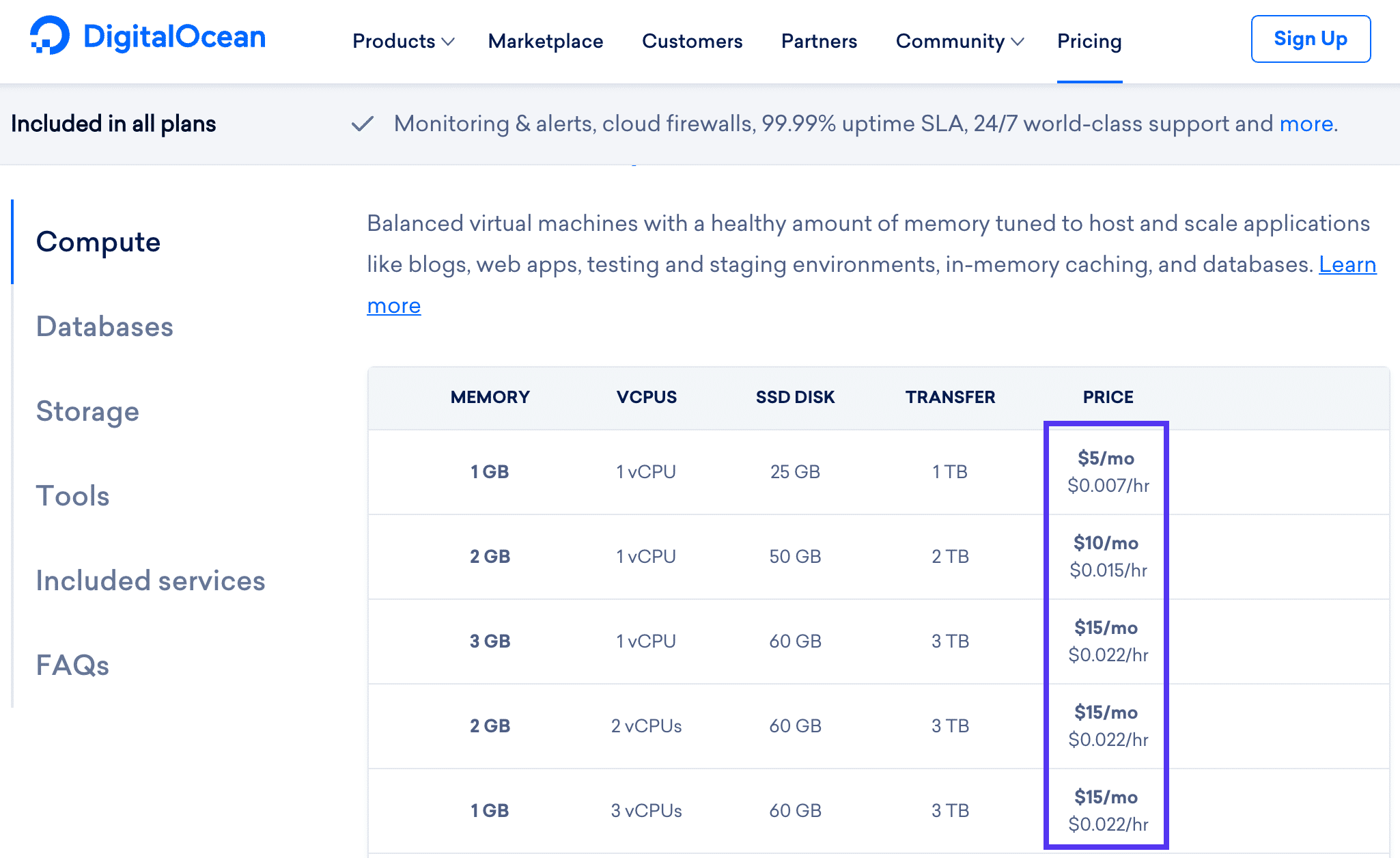
The caveat here is that these machines aren’t just plug-and-play. You’re just paying for the CPU, RAM, disk, etc. While many of them have one-click apps, you are responsible for everything else. You could try to make it a little easier with a tool like ServerPilot, but this doesn’t provide you with 24/7 support when you need it the most. There is a reason this route is typically referred to as DIY hosting.
2. You Can Install Whatever You Want
Obviously, one of the biggest advantages of being your own sysadmin is that you have complete control over everything. You can install and run whatever you want on your server. Need a software package or PHP extension like Ioncube installed? You don’t have to worry about being slowed down by asking a support team, you can simply SSH into your server and install it yourself.
3. You Get Full Root Access
Related to the above, some things require root access to install on servers. You typically won’t get root access when using a managed WordPress host. Why? Because they can’t take the risk of you breaking things. One wrong command and you could bring your server down. Root access is a “double-edged sword.” However, if you have the skills, then having full root access comes in handy. This reason alone is sometimes why users choose to manage their own servers.
4. It’s Possible to Achieve Awesome Performance
Another advantage is that if configured properly (and usually this takes a lot of work and knowledge), you can achieve awesome performance when managing your own servers. This is because barebone resources are typically fairly cheap and since you manage everything, you can ensure that no resources are being shared with any other sites. In fact, a lot of sites users tend to go overboard and purchase way more resources than are actually being used by their sites.
Disadvantages of Being a Sysadmin
Now it’s time to dive into the many disadvantages that come with being a sysadmin. And yes, as you probably guessed, there are a lot more disadvantages than advantages. But that’s also why a sysadmin’s job is so important. You just have to ask yourself, should that person be you?
We’ll also show you can accomplish each of the tasks with almost no effort at Kinsta.
1. Server Set Up and Configuration is Your Entirely Your Responsibility
Whenever you need a new server, setting it up is entirely your responsibility. If you’re using a barebones machine or VPS provider, this typically means spinning up a new machine. So you better know how much RAM, CPU, and PHP workers your site needs based on your traffic. You also have to know the memory requirements (InnoDB buffer pool for the database, system memory requirements, php-fpm worker requirements, etc.).
After it’s running, you’ll have to configure it. Depending on what you need, this could include all sorts of tasks, such as:
- Assigning an IP address
- Setting up DNS records
- Installing Nginx/Apache (check out our web server showdown: Nginx vs Apache)
- Installing PHP
- Installing software packages such as Node or Yarn
- Installing PHP extensions such as Ioncube or Recode
- Updating to the latest version of MySQL or MariaDB
If you’re using a barebone machine, installing (and upgrading) and configuring all the services required for WordPress can take days. If you use an auto-installer, you’ll still be left with no idea how to keep the machines updated or secured. Same goes for MySQL and php-fpm settings. Knowing exactly what to change and what value to change it to can make night and day difference.
Many don’t realize everything that goes on behind the scenes. At Kinsta, we custom compile a bunch of Linux packages for maximum performance. This is almost impossible to do on your own, and therefore you will lose performance right from the start. Our Nginx ruleset is built based on our experience running tens of thousands of high-traffic WordPress sites. These rule sets include everything from security to performance tweaks.
We also have over 30 different software packages and PHP extensions that are commonly used by clients. And for those of you who might not be familiar with installing server-side software, these typically aren’t just a one-click installer. To give you a better picture, below are the typical steps needed to install Ioncube (PHP extension) if you’re doing it yourself:
- Download and extract Ioncube to the server
- Copy the files to PHP directories
- Edit php.ini files
- Test and reload Nginx
- Restart the current PHP engine
- Check the logs, clear cache, etc.
In other words, if you are managing your own servers, make sure to set aside some time for configuring new ones when they are needed. And after that, you still have to install and set up your WordPress site.
Launching a New Site at Kinsta
If you go with an application, database, and managed WordPress host like Kinsta you don’t ever have to configure anything on the server. You can launch a new site at any time. Just log in to the MyKinsta dashboard and click on “Add a Site.” Your biggest task will simply be trying to strategically choose from the 37 different data center locations we offer to host your site.
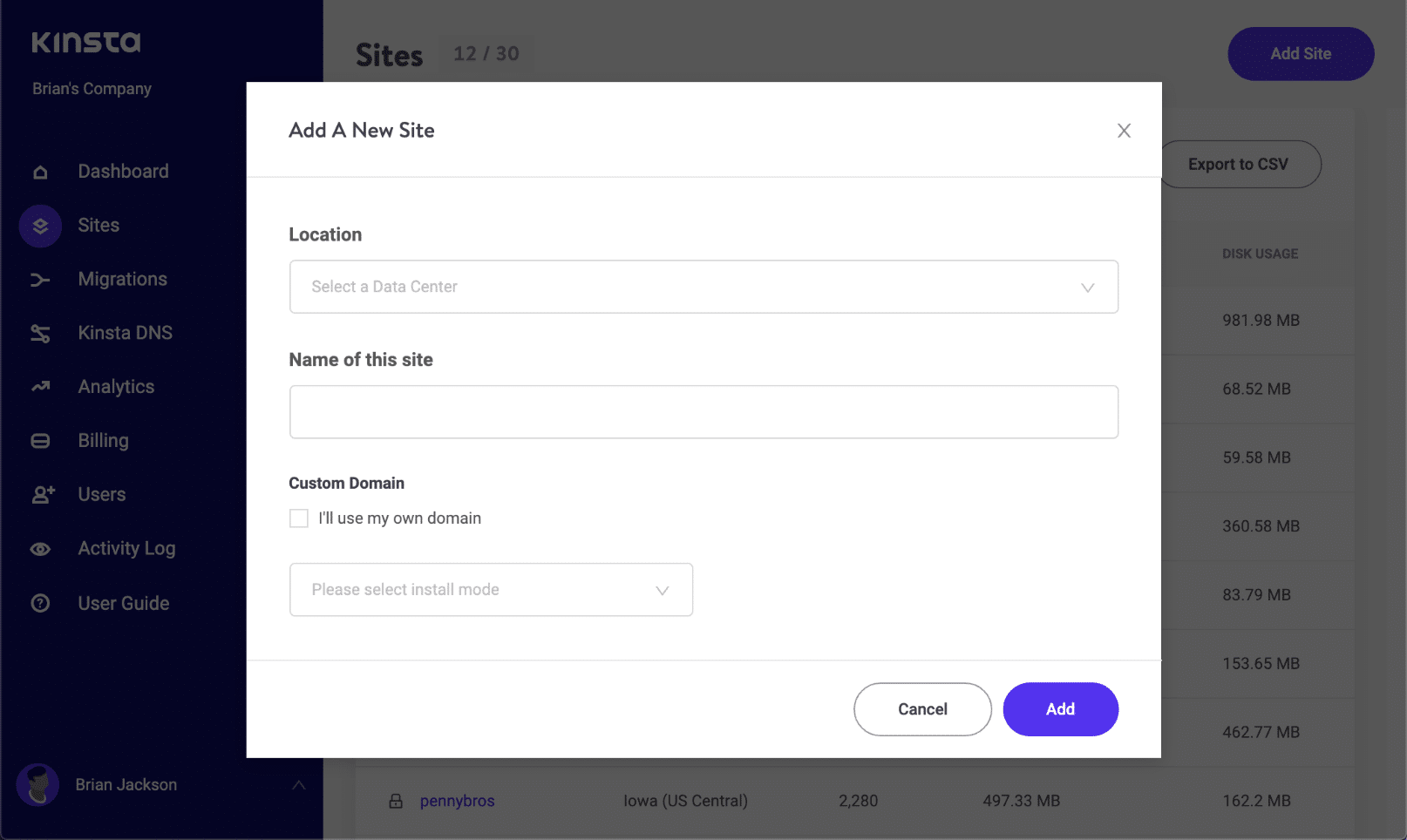
Need a new software package or PHP extension like Ioncube installed? Most likely it’s already running on Kinsta’s servers. But if not, you can easily enable it by clicking on a single button on the dashboard.
2. You Have to Take Care of Backups
When you’re managing your own servers, you will most likely have to come up with your own backup solution. Some providers might offer an extra service for this, but it’s usually far from perfect. For example, if you are using Digital Ocean Droplets, they only offer weekly snapshots of your machine. And they also add 20% to the cost of the Droplet. Anyone would agree, weekly backups are far from enough.
And that is just the server backup. Most likely you would want to also configure a separate offsite backup solution for your WordPress site itself, especially if you have multiple sites on a server. Therefore, this can incur an additional cost, both for the solution and for the disk space to store them. Check out a few recommended WordPress incremental backups plugins.
How Backups Work at Kinsta
Backups couldn’t be easier at Kinsta! At the server-level, we create and store persistent disk snapshots of every machine in our infrastructure every 4 hours for 24 hours and then every 24 hours beyond for two weeks. Google Cloud Platform automatically stores multiple copies of each snapshot redundantly across multiple locations with automatic checksums to ensure the integrity of your data.
This means that snapshots are stored in different datacenters from the location where they were originally created. If our Google Cloud Platform infrastructure is ever affected we will always have snapshots to restore.
Then when it comes to your sites, Kinsta offers automatic daily backups, downloadable backups, manual backup restore points, and even system generated backups which are an automatic system backup created during certain events. And if that weren’t enough, we have an hourly backup add-on you can purchase to create backups every hour or every 6 hours. The backups are stored within the persistent disk snapshots (at multiple locations).
Because of this, there is no need for a backup plugin if you host with Kinsta. 🤘 You can restore backups with a click of a button and even copy them to your staging environment. Better yet, Kinsta doesn’t include your backups in your total disk space usage.

3. Locking Down Your Servers and WordPress Sites Is up to You
When you manage your servers, locking them down is up to you. Linux hardening, in general, requires years of experience.
You are the one responsible if malicious code gets into your network or if someone is launching a brute-force attack. Then there are DDoS attacks that can literally take your server offline in minutes. And trust us, DDoS attacks always come at the worst time. You better know how to identify the source and block it.
Securing your server and WordPress sites can include a variety of different tasks, such as:
- Implementing hardware and software firewalls (everything from server-level software to web application firewalls such as Cloudflare or Sucuri).
- Install Malware scanning software. This usually entails both Linux and WordPress.
- Patching Nginx/Apache or updating PHP with security updates.
- Tightening file/folder restrictions on the server.
- Cleaning up a hacked WordPress site (you can never protect WordPress 100%, all it takes is one bad plugin).
WordPress is awesome, but this year has been one of the worst we’ve ever seen in terms of plugin vulnerabilities. You better make sure you know how to properly clean up malware on a WordPress site. We hear time and time again from users trying to do this themselves and struggling with it for days!
Here are just a few recent incidents that our team at Kinsta has had to deal with:
- Vendor Backdoors & Suspicious Code in Pipdig Power Pack
- XSS and RCE Vulnerabilities and Attack Data in Social Warfare plugin
- Unauthenticated Call Any Action in Yuzo Related Posts plugin
- Zero-Day Vulnerability in Yellow Pencil Visual Theme Customizer
- SQL Injection in Duplicate-Page WordPress plugin
- Unauthenticated SQL Injection in WP Google Maps plugin
Make sure to read our in-depth guide on SQL injection.
Some VPS providers like Digital Ocean provide Cloud Firewalls. But it’s still up to you to implement them and know for example which inbound rules you need on ports, what IP addresses should backlisted or whitelisted, etc.

Rest Easy at Night with Kinsta’s Fort Knox Like Security
Do you really want to spend your weekend trying to fend off a hacker or stop a DDoS attack? And do you even know how? This is why unless you have some serious technical chops when it comes to security, it’s only a matter of time into you run into a serious security problem that has you scrambling.
If you go with an application, database, and managed WordPress host like Kinsta, we take care of all this for you. Here are just a few security features that we offer on all of our hosting plans.
- Kinsta detects DDoS attacks, monitors for uptime, and automatically bans IPs that have more than 6 failed login attempts in a minute.
- Only encrypted SFTP and SSH connections (no FTP) are supported when accessing your WordPress sites directly (here’s the difference between FTP and SFTP).
- Hardware firewalls, along with additional active and passive security measures are in place to prevent access to your data.
- We hide both the WordPress and PHP version you’re using from front-end requests. Our open_basedir restrictions also don’t allow execution of PHP in common directories that are prone to malicious scripts.
- Kinsta uses Linux containers (LXC) on top of Google Cloud Platform (GCP) which provides complete isolation for not just each account, but each separate site. This is a much more secure method than offered by other competitors. GCP also employs data encryption at rest.
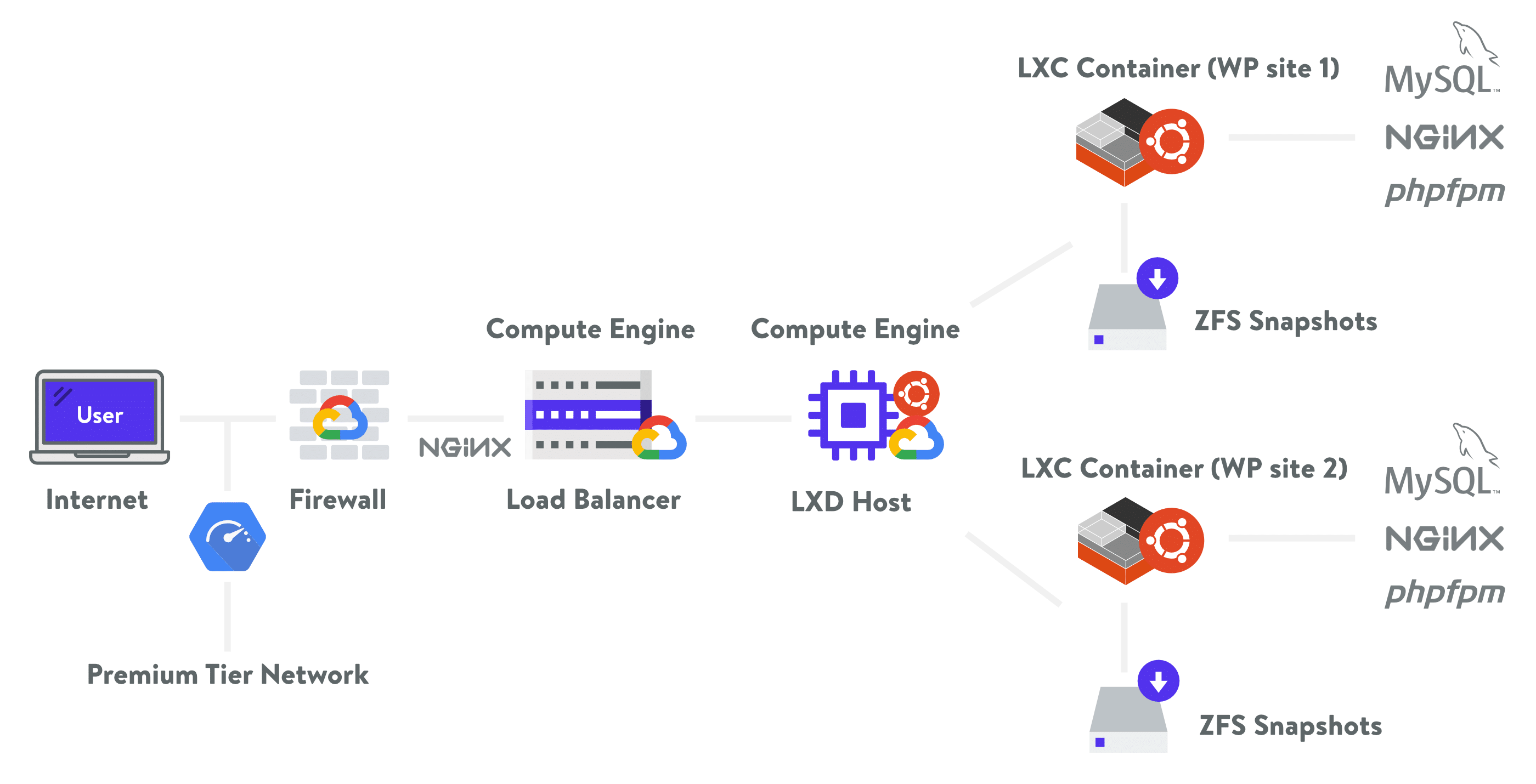
Kinsta hosting architecture. - Kinsta utilizes Google Cloud Platform’s premium tier network and enterprise-level firewall. Our firewall configuration allows us to block malicious traffic before it enters our network of virtual machines. Compared to GCP’s standard tier network, the premium tier routes more traffic through Google’s fast and secure private network.
- Kinsta only runs supported versions of PHP: 7.2, 7.3, and 7.4 (excluding phase-out time). Unsupported versions of PHP are dangerous due to the fact that they no longer have security updates and are exposed to unpatched security vulnerabilities.
Nothing is ever 100% hack-proof, and that’s why Kinsta provides free hack fixes for all clients. That’s right! In those recent plugin vulnerabilities with Social Warfare, WP Google Map, etc. our team let clients know and cleaned up the affected sites. In some instances, our sysadmins even patch things at the server level. We take security very seriously and are proactive when it comes to your sites.
4. Make Sure to Pick the Right Caching Solution
When it comes to performance, nothing is more important than caching!
Caching is the process of storing resources from one request and reusing those resources for subsequent requests. Basically, it reduces the amount of work required to generate a page view. You want to serve as much of your site from cache as possible. That is what results in those lighting fast speeds.
When it comes to managing your own servers, you will have a decision to make. Should you implement a server-level caching solution (such as the nginx fastcgi cache module) or go with a WordPress caching plugin like WP Rocket? A hybrid approach is also another option.
Unless you’ve tested the dozens of different solutions and technologies out there, how are you supposed to know which one is best or the fastest? As a sysadmin, you should understand the difference between bytecode cache, object caching, page cache, Varnish, Redis, etc., and how they interact with both the server and plugins. Having a well fine-tuned caching solution means the difference between a slow and fast site.
Kinsta Handles Caching For You (No Plugins Needed)
If you host with Kinsta we handle caching for you automatically at the server-level. Our servers use the nginx fastcgi cache module to deliver fast page caching.
The page cache is configured to work right out of the box with standard WordPress, BuddyPress, WooCommerce, and Easy Digital Download sites. You don’t have to do a thing! Simply launch your WordPress site and page caching will start happening.
Whenever you make edits to a page or blog post, the cache of the page is automatically purged, as well as archive pages. This makes sure your visitors see fresh and up to date content. We also impose a minimal throttle time on archive pages to ensure high availability at all times.
And while it’s not technically a caching plugin, our must-use (MU) plugin is installed on every site which gives you more granular control over your caching. You can easily clear your site’s cache from the WordPress admin toolbar, or add custom paths to purge whenever our site is updated.
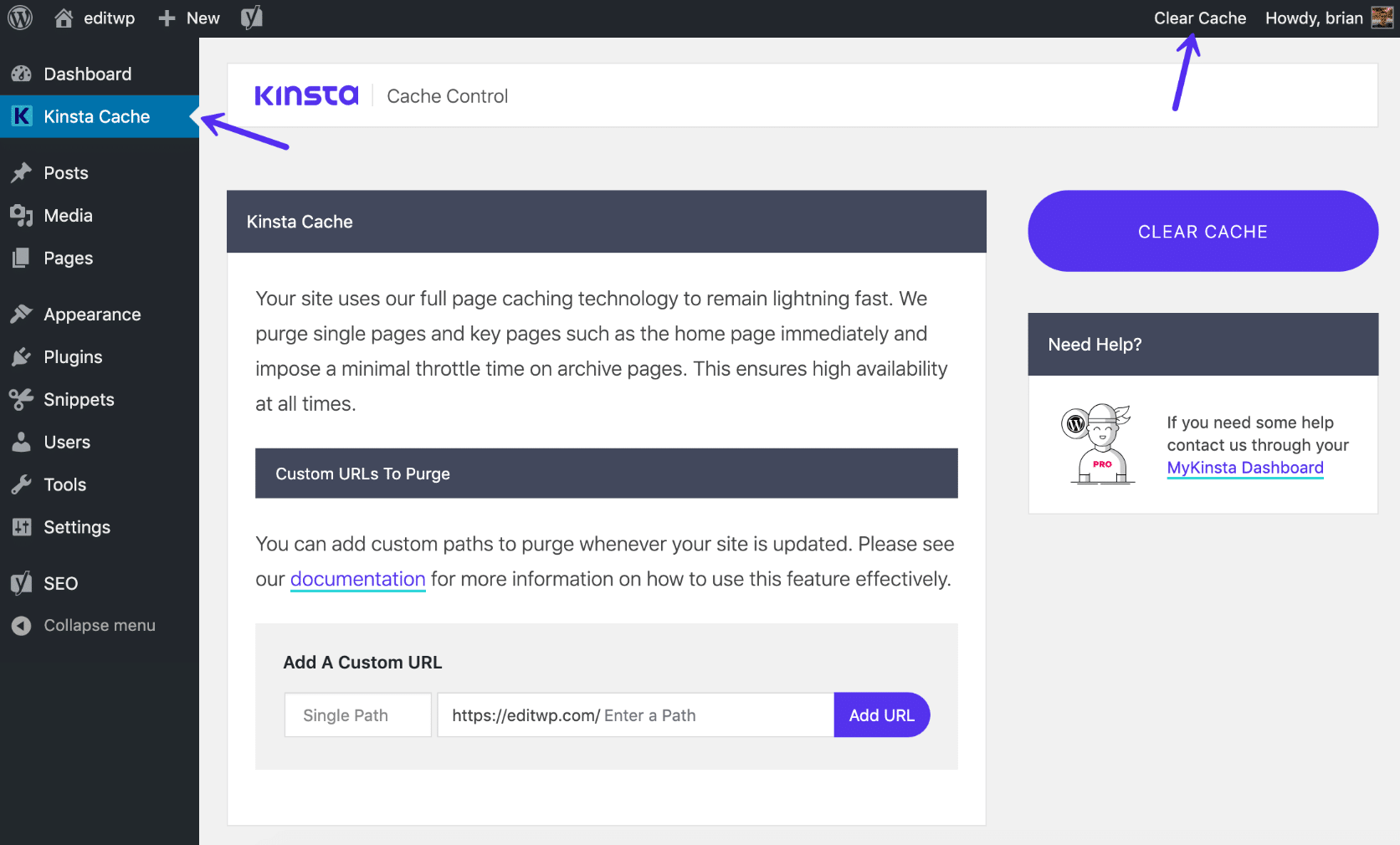
You can also clear your entire WordPress site’s cache from the MyKinsta dashboard with a simple click.
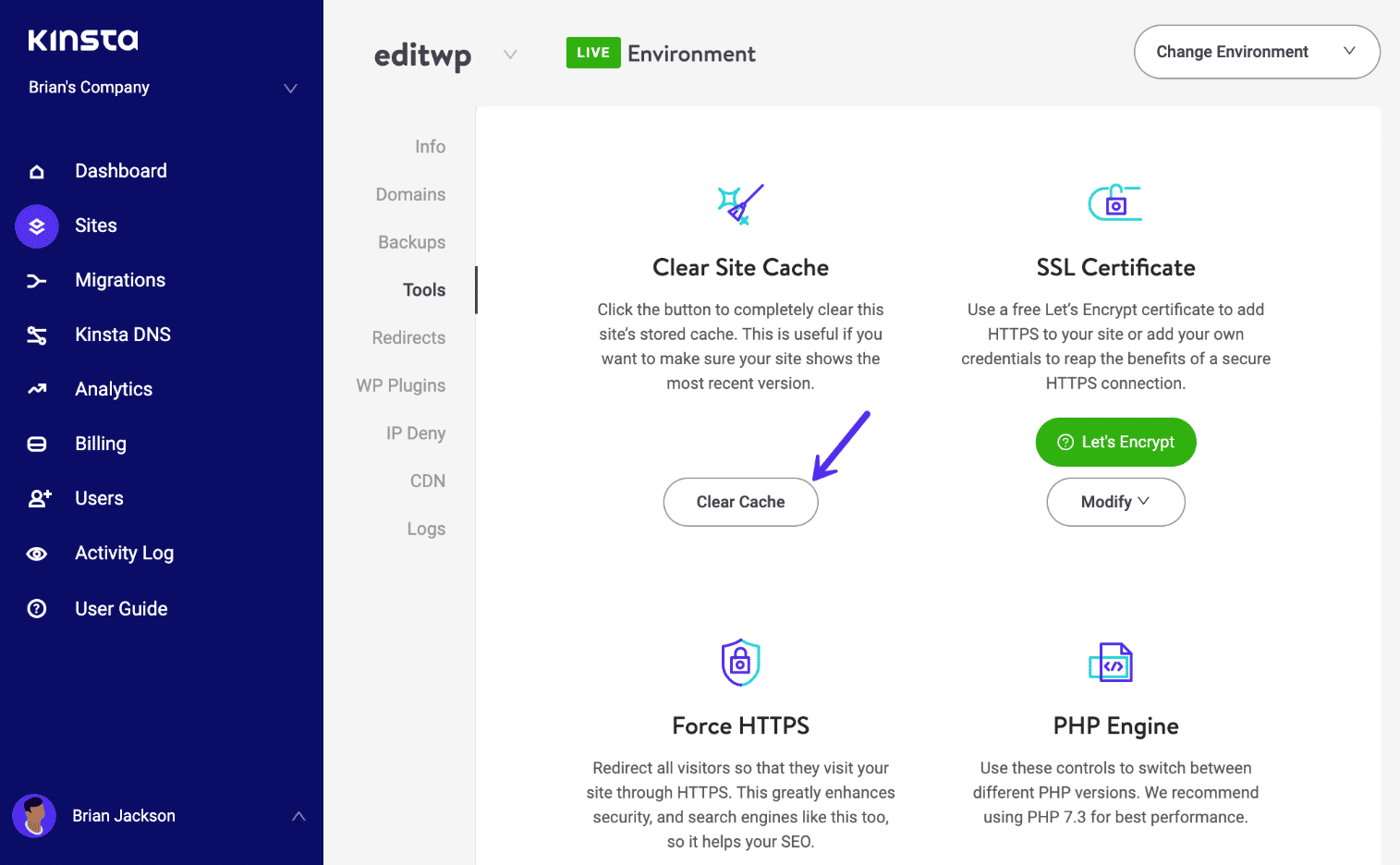
We also provide additionals ways you can analyze your cache data in our MyKinsta analytics tool and the kinsta cache logs. These can help determine if there are cache BYPASSing GET requests that could be cached or POST requests that could be eliminated.
The cache component stack (as shown below) lets you see the status of each request, whether it was a HIT, BYPASS, MISS, or EXPIRED. You can filter the data by the past 24 hours, 7 days, or 30 days.
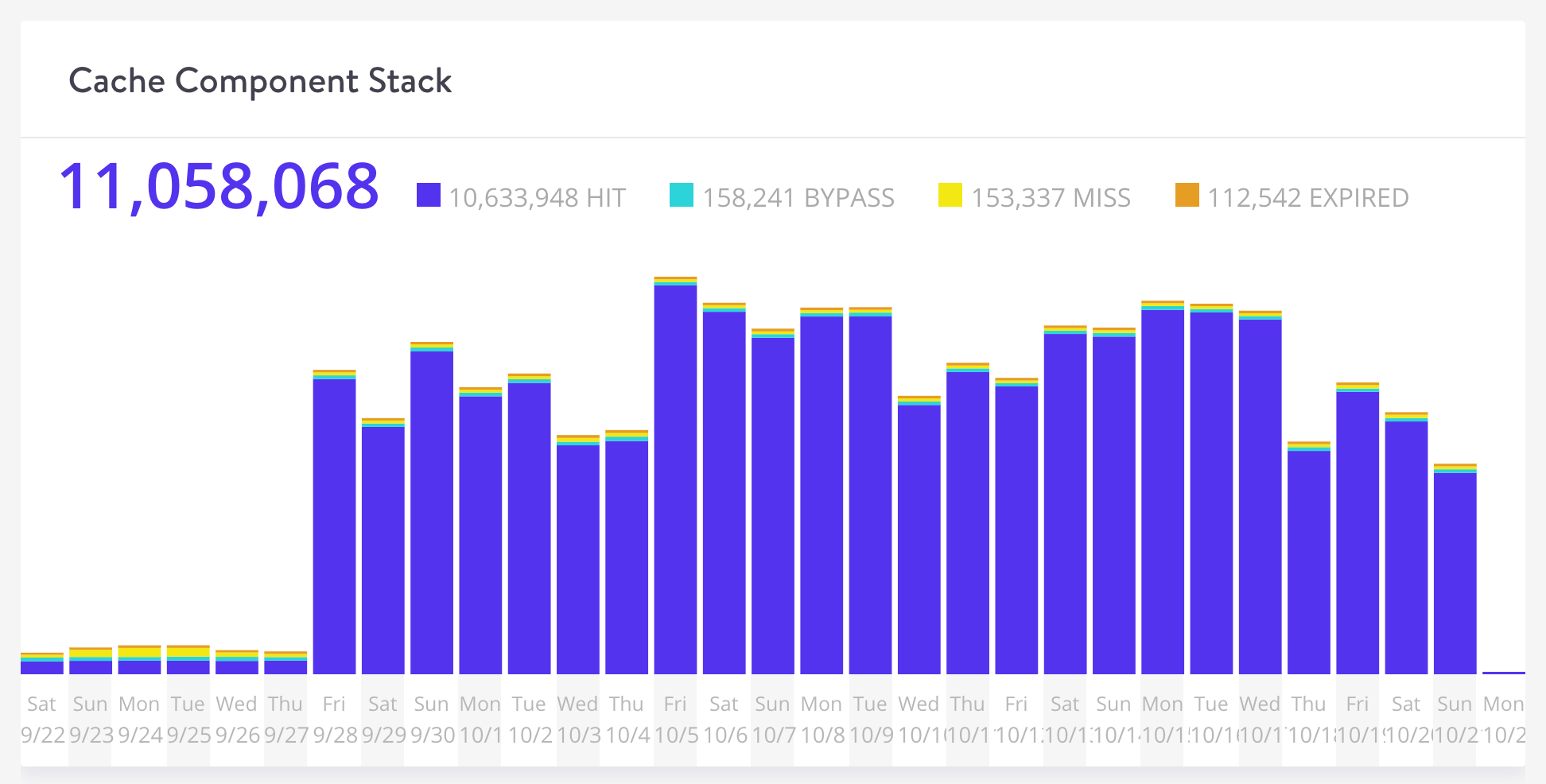
The cache component chart gives you a glance at your caching ratio. The more requests you serve from cache the better. As you can see in the example below, this WordPress site is at a 96.2% cache HIT ratio. Which is good!
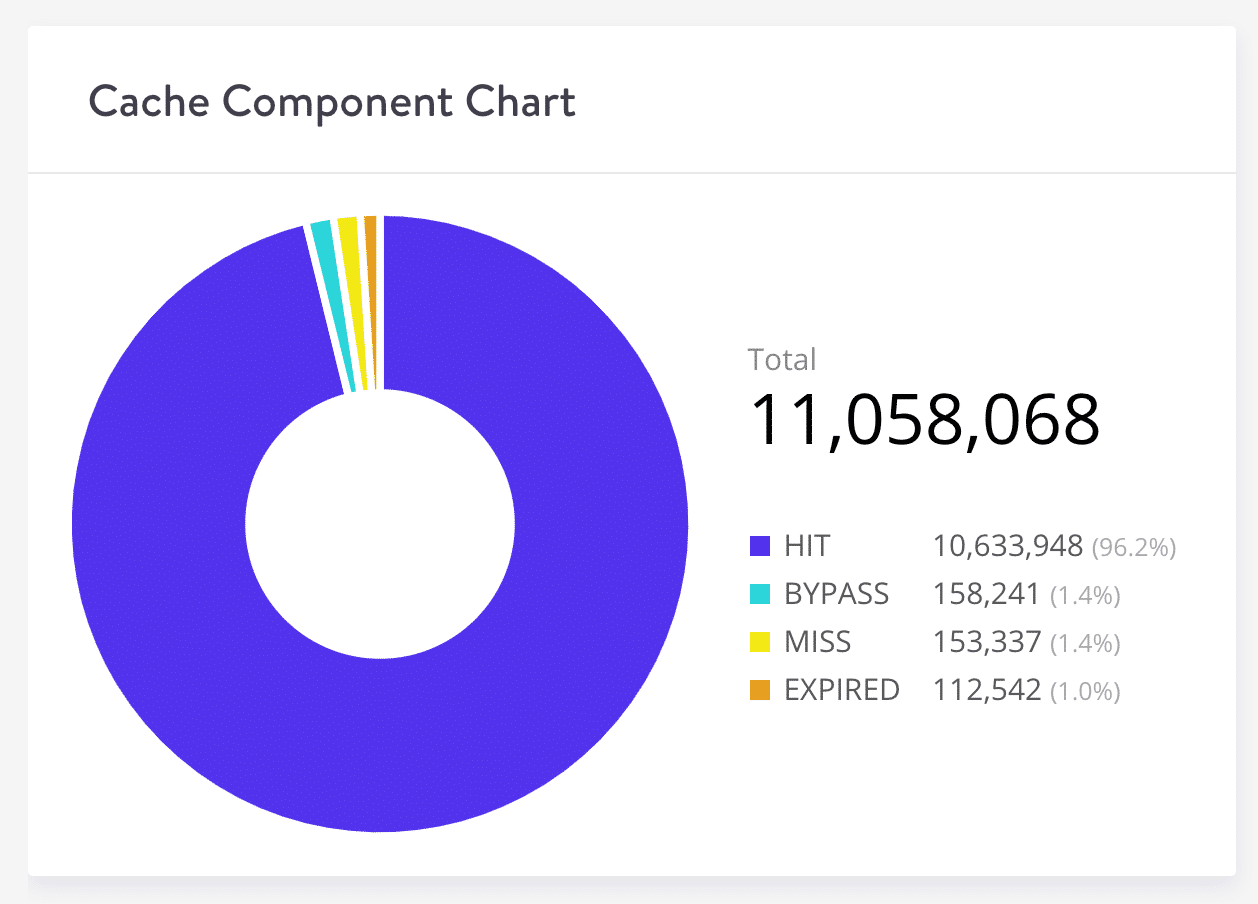
The top cache bypasses section lets you see which requests are not being served from cache. Typically these might include CRON jobs, admin-ajax requests, ecommerce checkout pages, query strings, and UTM parameters, etc.
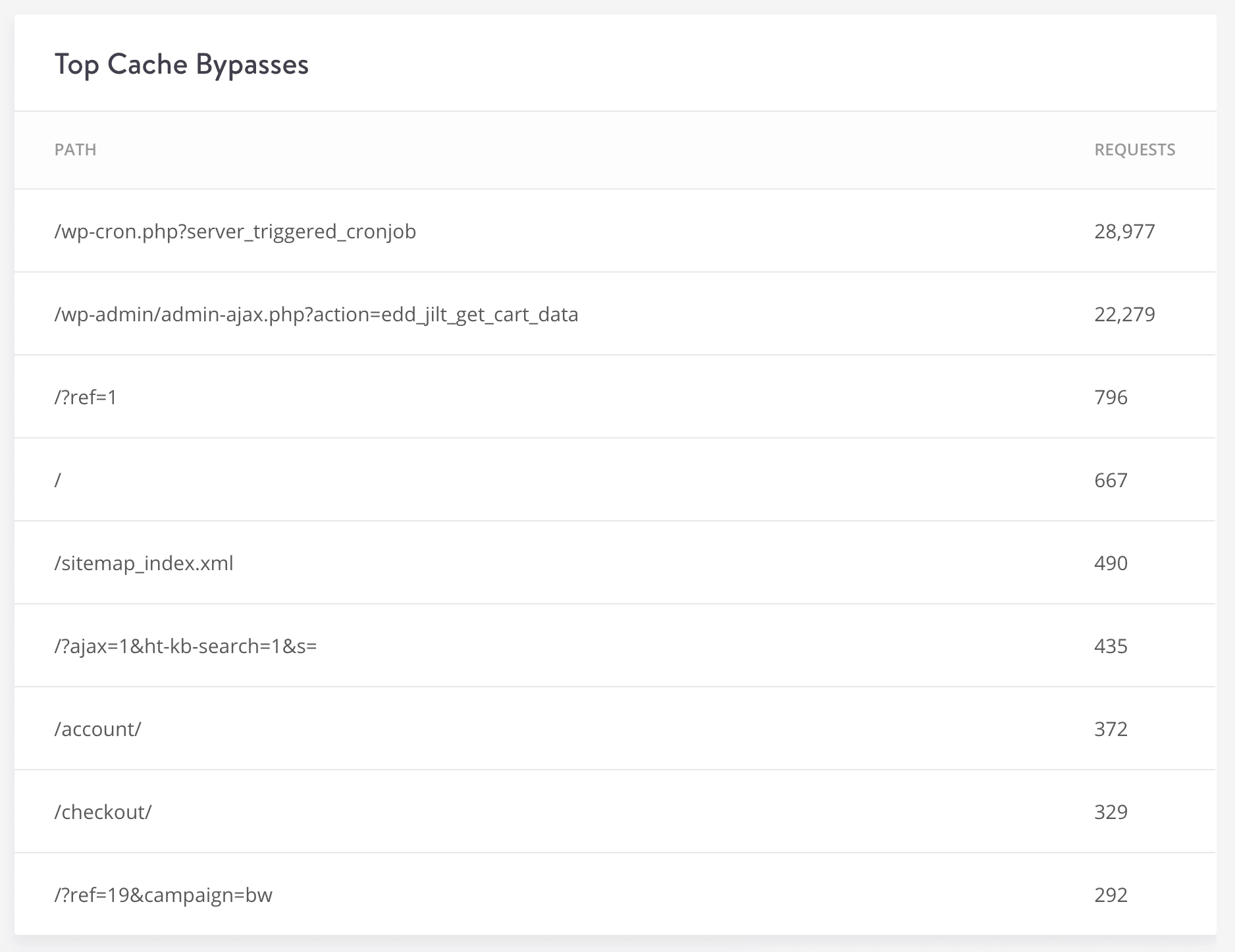
5. Staging Environment Isn’t Magically There
Staging environments provide an easy risk-free way to test updates (plugins, WordPress core, themes), debug code, and do development work without impacting your production site. Many of us take staging sites for granted these days. But imagine if you didn’t have one? What would you do?
If you’re managing your own servers, you would need to implement your own solution. If you’re using a VPS provider like Digital Ocean or Linode, you can clone your machine, but this isn’t a quick solution and isn’t free.
If you’re wanting a more WordPress focused solution, there are some decent ones, such as WP Stagecoach (starting at $120 a year) and ManageWP (starting at $2/month per website), but again, none of these are free.
This is important to keep in mind if you’re comparing pricing on managing your own servers versus managed WordPress hosting.
Kinsta Offers One-Click Staging
At Kinsta, each site comes with its own staging environment. All you have to do is click “Create a Staging Environment” and you instantly have a copy of your production site. This makes it super easy to test things.
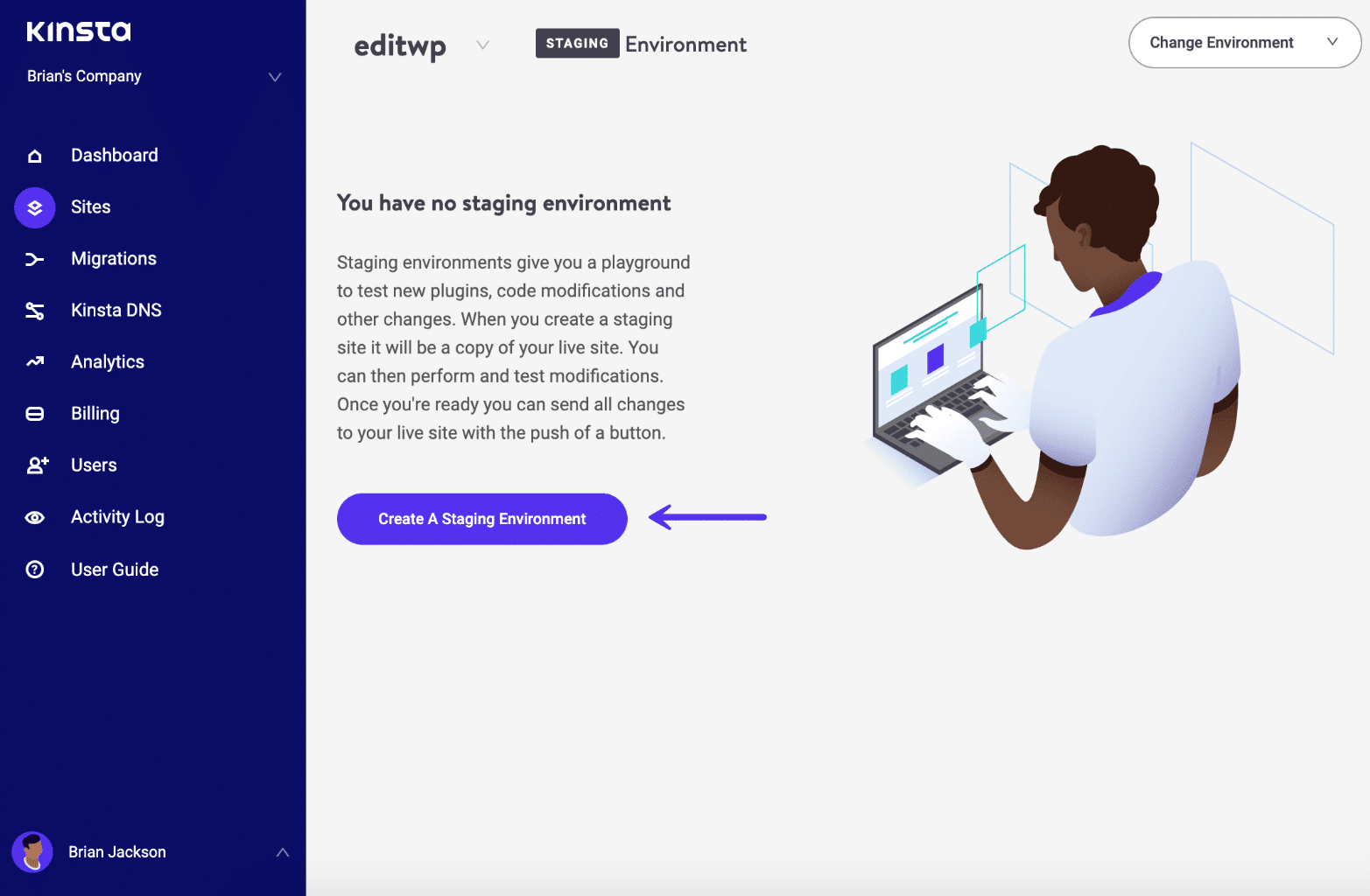
Kinsta customers can also opt to add up to five Premium Staging Environments if one staging setup isn’t enough.
When you’re done, you can push the changes back to live with a push of a button. You can even restore backups of your production site to staging.
To give you as much space as possible, staging sites are excluded from our reporting when calculating your total disk space usage. Only live sites count against your disk space usage.
6. Don’t Forget About Monitoring
The last thing you want is for your website to go down on a Friday at 2 am and you don’t realize it until Monday morning. This pertains both to your server and to your sites, as each could have its own set of issues which could take them offline.
Website downtime can impact you a lot of different ways.
- Your income will take a hit.
- It’s bad for your brand and credibility.
- Depending on the length of downtime, your crawl rate and search rankings could suffer.
Therefore, you essentially need to monitor your server and sites 24/7/365 to make sure everything is fine and running smoothly. If you’re managing your own servers, this means you’ll need uptime monitoring solutions to alert you.
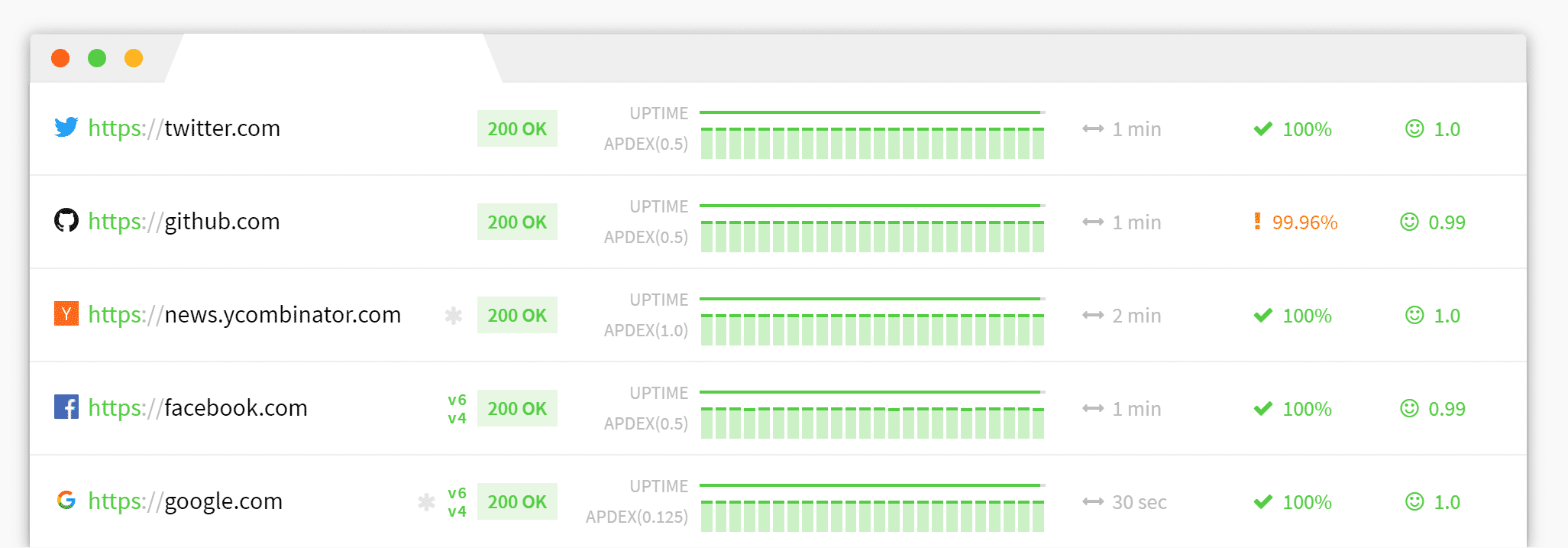
While VPS providers like Digital Ocean and Linode offer server monitoring solutions, they don’t for your WordPress sites. Depending on the number of sites you have and types of alerts you need, you will most likely need to pay for a separate service. Below are a couple of the more popular solutions:
Don’t Worry, Kinsta Has Your Back 24/7/365
If you host with Kinsta, you don’t need to worry about the server-side of things. Our sysadmin team handles that! If there is an issue, you’ll get a notice in your MyKinsta dashboard or you can check our status page.
In regards to your sites, we include premium uptime monitoring using the Kinsta APM tool. You can also use New Relic, though you do need to have your own license. We check the status of all the websites we host every 3 minutes. That translates to 480 checks for each of your sites every day.
We take a proactive approach. This means that if your website goes down, we will be the first ones to be notified and our engineers will hop on it! If needed, we’ll reach out to you if we see something wrong with your site. This way you don’t have to worry about checking it constantly or during the holidays.
7. You’ll Need SSL Certificates
Your sites should be running over HTTPS. The easiest and cheapest way to do this is with free Let’s Encrypt SSL certificates. The problem is, if you’re using a barebones machine or VPS provider you’ll need a system in place for installation and automatic renewal (Let’s Encrypt certificates expire every 90 days).
The most common method is probably using Certbot. But this entails the following:
- Installing Certbot on your server
- Setting up Nginx
- Allowing HTTPS through the firewall
- Obtaining an SSL Certificate from Let’s Encrypt
- Verifying Certbot auto-renewal
Another method would be to use a solution like ServerPilot along with your VPS provider. But this isn’t free, ServerPilot plans start at $5/month.
Kinsta Has Free One-Click SSL
Kinsta makes installing SSL certificates incredibly easy! Simply log in to our MyKinsta dashboard, browse to your site, and click on “Generate a free HTTPS Certificate.” Instantly your site is running over HTTPS. No need to worry about renewals, our automated system takes care of everything.
Going with a custom SSL certificate instead? No problem, easily install that from the dashboard as well.
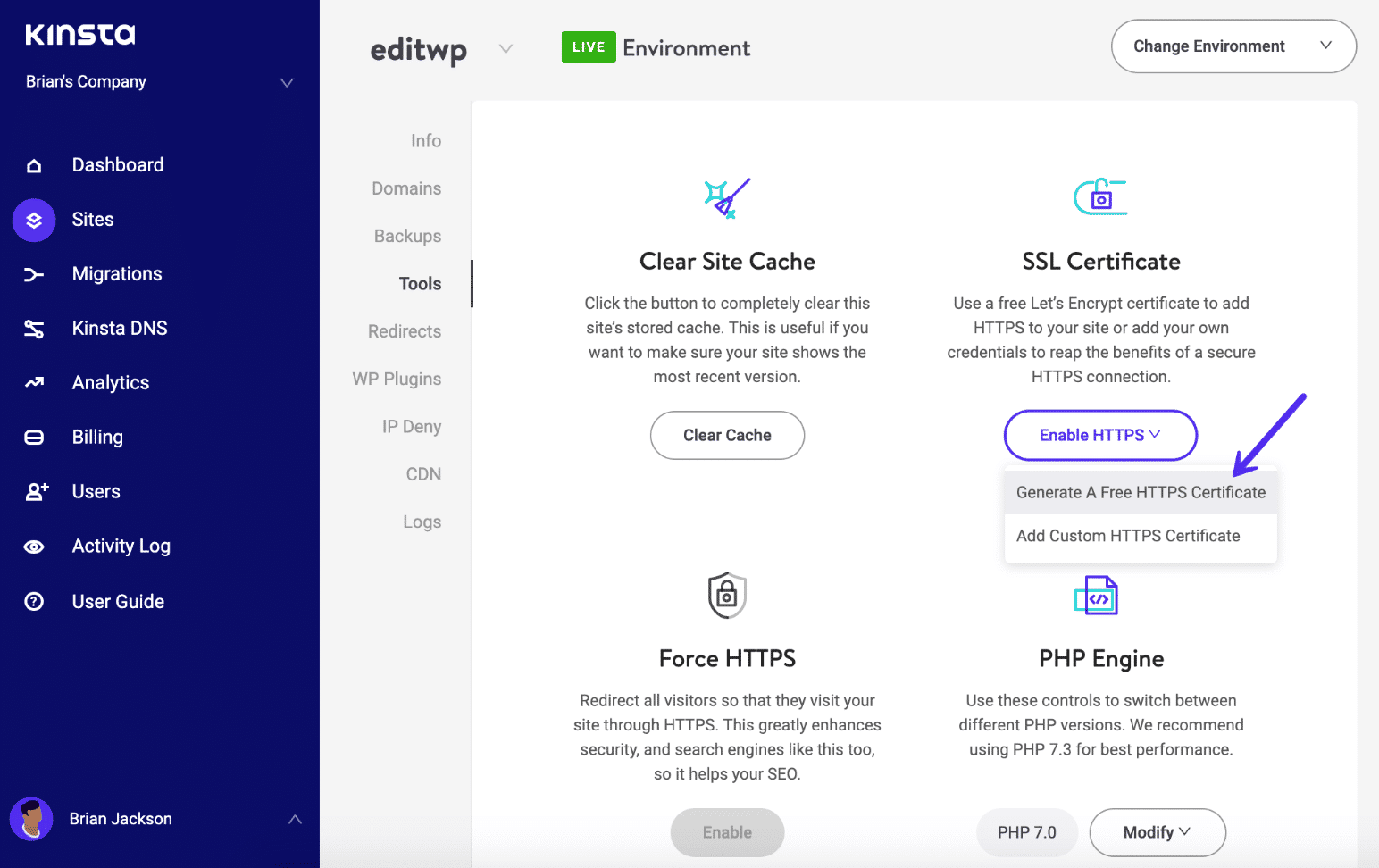
Running an online store? Check out our in-depth guide on WooCommerce and SSL.
8. Are You An Expert in WordPress Performance Troubleshooting?
It’s first thing Monday morning and your WordPress site has suddenly slowed to a crawl. Where do you begin to troubleshoot performance issues? Is something eating up all the resources on the server or is it something on the WordPress site itself? There are literally hundreds of things that cause performance issues with WordPress.
If you’re running an eCommerce or membership site, you are bound to run into performance issues at some point, as these types of sites have their own set of problems. Check out our do’s and don’ts for hosting WordPress membership sites.
The easiest way to troubleshoot a performance issue and figure out what is going on is with a premium tool like New Relic (license required).The catch? This tool at a bare minimum costs $75/month.
Kinsta’s Platform is Scalable and We Can Help You Pinpoint Performance Issues
You don’t have to worry about server resources at Kinsta. We utilize virtual machines, located in Google Cloud Platform’s multiple data centers.
In available regions, we utilize their compute-optimized C2 or C3D virtual machines. These offer the highest performance per core that GCP offers on Compute Engine and are optimized for compute-intensive workloads. In terms of processing, the C2 machines support a maximum of 60 virtual CPUs and 240 gigabytes of RAM, while the C3Ds can utilize up to 360 virtual CPUs and 2.88 terabytes of DDR5 memory.
Hardware resources (RAM/CPU) are allocated to each site container automatically by our virtual machines on an as-needed basis.
We utilize LXD managed hosts and orchestrated LXC software containers for each site. What this means is that every site is housed in its own isolated container, which has all of the software resources required to run it (Linux, Nginx, PHP, MySQL). The resources are 100% private and are not shared between anyone else or even your own sites.
MySQL databases are hosted at localhost, not a remote server. This ensures that there is no latency between machines, which results in faster queries and quicker page load times.
It could be an external service is timing out, a plugin or the active theme is causing problems, or the site database is struggling to keep up with the rate of queries. Whatever the issue, we can usually narrow this down and provide suggestions on how to fix the problem.
Troubleshooting performance issues or problems with a plugin/theme is something our team does on a daily basis. You are in good hands at Kinsta. Our entire support team is made up of WordPress developers and Linux hosting engineers. Rest assured, you’ll be talking to someone who can provide actionable advice.
Remember, you can dive into to New Relic yourself, but you will have to have your own license.
9. Updating Software Can Be Time Consuming
What would you rather spend your time doing, growing your business or updating software? When you manage your own servers, you will have to update software all the time, check for security patches, and install things like the latest PHP versions.
For the most part, this has to be done via SSH from the command line. So be prepared to whip out your sudo apt-get update commands.
Kinsta Always Offers the Latest and Greatest
You don’t have to install anything when you host at Kinsta. We employ only the best technology at Kinsta, from our server hardware to the software we run. No matter what development stack you use, we’ll always have the latest framework versions installed and up to date.
We typically release the latest version of PHP within weeks of its official release! That’s right, unlike our competitors, you won’t be waiting for months or even years. We even try to release beta versions if you want to test sooner.
Why is this so important? Because in our recent PHP benchmarks, if you compare PHP 7.3 to PHP 5.6, it can handle 3x as many requests (transactions) per second! PHP 7.3 is also on average 9% faster than PHP 7.2. Not only can the latest versions of PHP help speed up your site, they also impact your WordPress admin dashboard responsiveness.
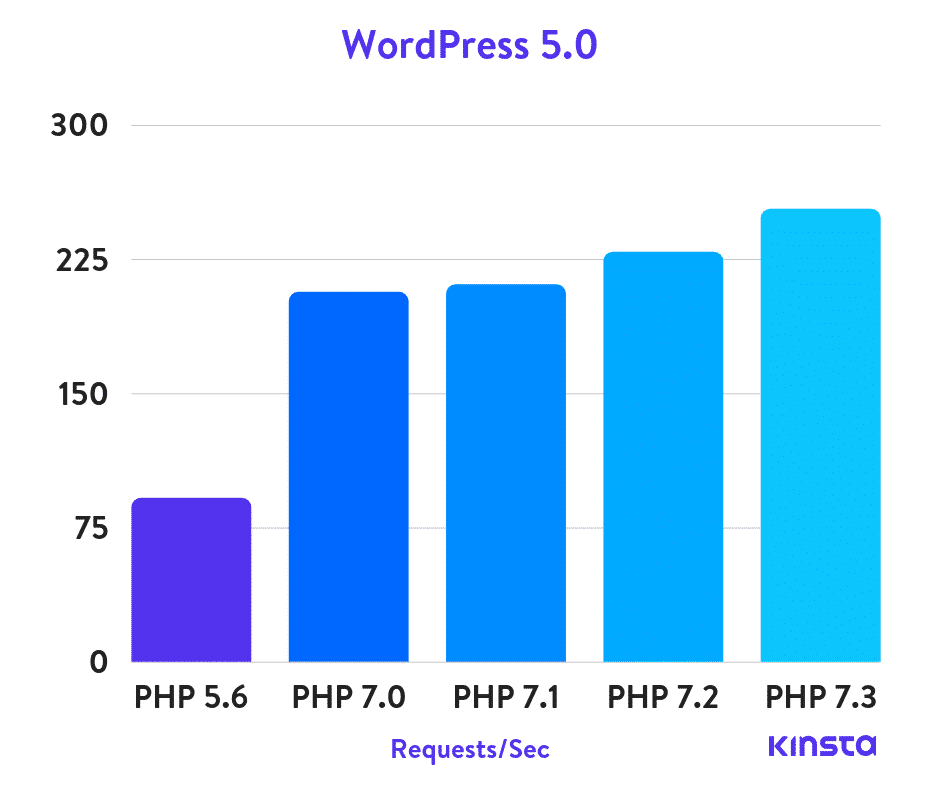
Faster speeds plus improved security, is why Kinsta always offers the most recent versions of PHP. You can change PHP versions with a single click.
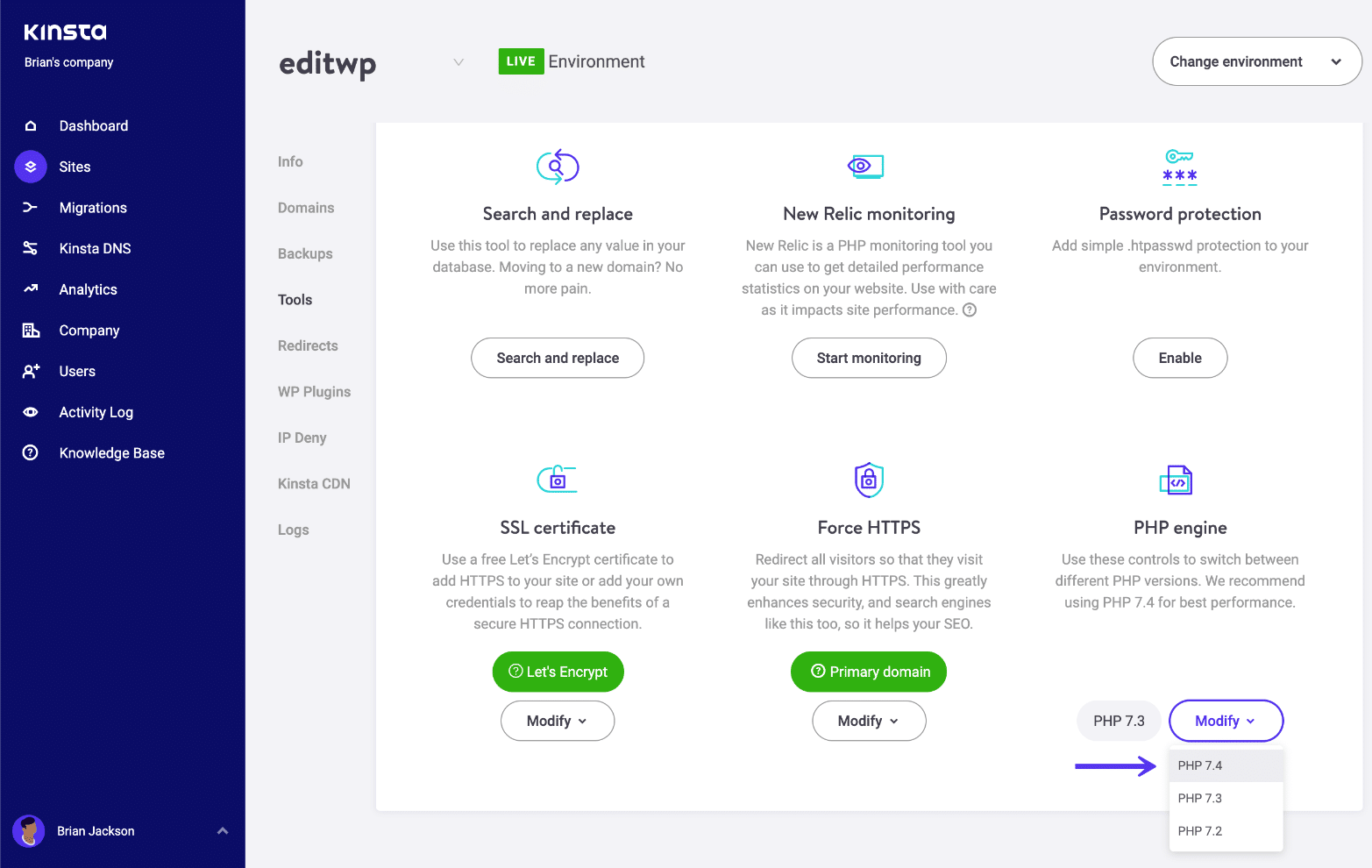
10. You Have to Spend Time Looking for Answers
It doesn’t matter how good you are at managing servers, it’s inevitable that at some point you’ll run into a problem where you have to spend time looking for answers. Whether it’s browsing StackOverflow or asking a fellow colleague, this probably isn’t a good use of your time.
We consistently get clients that migrate their WordPress site to Kinsta because they were having a hard time trying to debug downtime with their VPS.

Save Your Time, Use Kinsta’s 24/7 World-Class Support
Instead of relying on Google to find your answers, take advantage of Kinsta’s expert support team which is just one click away, even on New Year’s Eve.

We literally changed how support works! We don’t have level 1 or level 2 support reps. Our entire support team is made up of WordPress developers and Linux hosting engineers many of whom have managed their own servers, created themes and plugins, and contributed back to core. This ensures you’ll receive expert advice from someone who actively uses and develops with WordPress.
Couldn't be happier with hosting my websites through @kinsta. I feel like their support team never sleep! Amazing service.
— Matthew Howells-Barby Ξ mhb.eth (@matthewbarby) July 3, 2017
Every Kinsta client gets to chat with the same team members that support our large enterprise and Fortune 500 companies. Fun fact, we hire less than 1% of applicants who apply for our support team member positions. You won’t find a more knowledgable team anywhere else in the industry!
11. You Have to Be Prepared for Viral Traffic
Did you just hit the front page of Hacker News or Reddit? While that’s awesome, it also means your server better be up to the task. Your $10 droplet probably won’t cut it. If you have any uncacheable content you’re serving up, forget about it!
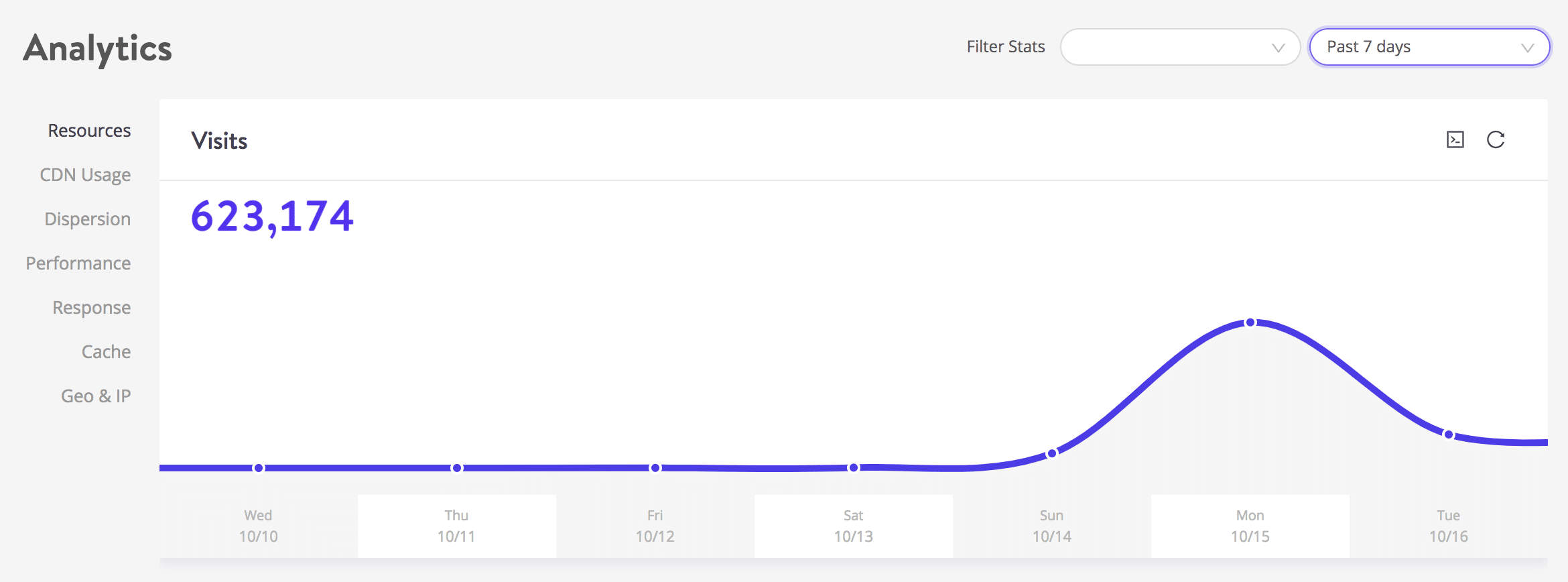
Use Kinsta’s Scalable Cloud Hosting
At Kinsta, our scalable cloud hosting essentially means that our infrastructure is ready to handle your sudden surges in traffic and load. With our isolated software container technology, each site container has access to the underlying CPUs without any clock speed restrictions. The result is a hosting configuration that is secure and private by design while simultaneously allowing server resources to scale up or down as needed based on the demands of the site.
Whether you’re going viral, appearing on Shark Tank, or covering an event, Kinsta has you covered!
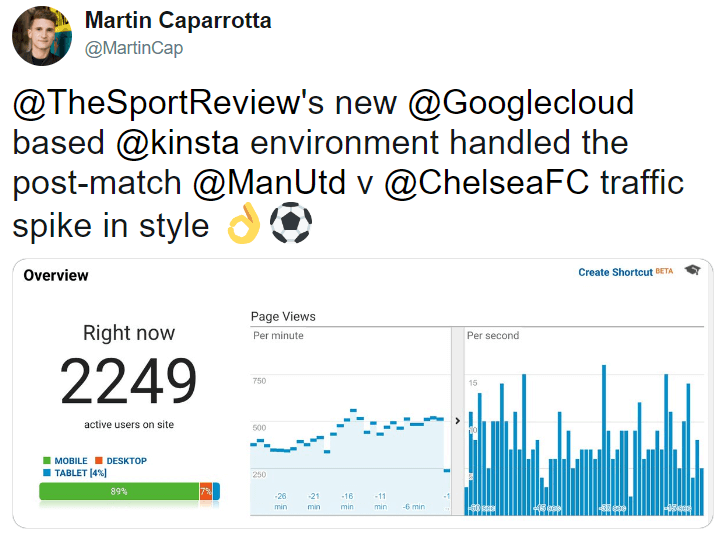
If you know about an event in advance, you can take this one step further and capitalize on exponential traffic spikes and surges. During this process, our team will take a look at your site and the analytics data available on our platform and point out areas for improvement – such as reducing calls to admin-ajax.php, disabling time-consuming plugins, implementing a CDN, and making changes to increase the site’s use of page caching.
How Much Is Your Time Worth? Are You Really Saving Money?
If you’re thinking about being a sysadmin or managing your own servers, you should first ask yourself, how much is your time worth? And by doing it yourself, are you actually saving money? Let’s crunch a few numbers:
- For a decent VPS, you’re looking at a minimum of $15/month.
- Add another $5/month for a backup solution/offsite storage.
- Add another $5/month for a CDN. Kinsta includes free CDN bandwidth on all plans.
- Add another $2/month for a staging site.
- Add another $5/month for a decent uptime monitoring solution (server + WordPress sites) with multiple alert methods.
- Add $75/month for a New Relic APM license for performance troubleshooting.
- Let’s say you value your time at $30/hour and you spend a bare minimum of 5 hours a month running server updates, cleaning up malware, troubleshooting, etc. That comes out to $150.
Your total comes to $257/month.
At Kinsta, our hosting plans start at $35/month and we do all the heavy lifting for you.
I was skeptical about using a managed WordPress provider when we had previously always managed our own hosting, but Kinsta is worth it. Their platform works perfectly without any tweaking. If you have problematic high traffic sites like us, you’ll love their migration service — they took care of everything and even identified some problem plugins that had been installed by former members of our team. I would have spent hours on the migration due to the size without their help. To top it off, their support team is very responsive — answering within minutes. Thanks, Kinsta!
Summary
We have nothing but the utmost respect for sysadmins! Kinsta’s sysadmin team keeps our client’s sites online. As Opensource.com puts it, “Sysadmins are the unsung heroes of the technology world.”
If you’re a tech-savvy individual and enjoying working with servers, by all means, being a sysadmin and doing everything yourself might be the way to go. But it’s important to crunch all the numbers, and this must include your time.
Managed WordPress hosting in many scenarios can actually save you a lot of money. You no longer have to worry about any technical issues. You can focus instead on other things, such as running your business, content creation, marketing, sales, etc.
Do you agree or disagree? We would love to hear your thoughts below in the comments.





This specifically lays out why Kinsta is priced at an incredibly valuable rate. With the amount of layers in your advanced and proprietary infrastructure is what sold me down to the very penny. Anyone with sysadmin time like myself knows that isolating the applications is for the benefit of the entire network. I am honestly impressed with this amount of information breaking down the headaches of managing servers 😂
Hey Robert! Thanks for the comment.
Yes, if you really break down each service and your time (the most important part), managing your own servers isn’t always as cheap as it appears. 😉 Plus, unless you enjoy troubleshooting and waking up at 2 am to bring a server back online, then a “managed solution” makes total sense.
I don’t usually comment but this is such a well targeted article for nearly anything that is comparing self-hosted vs hosted services. I don’t use WordPress personally and have never heard of Kinsta, but with all the trouble you can get into I’d never recommend DIY for a public service. I’m well seasoned in running services myself and know that it’s impossible to be an expert in everything. Take advantage of others knowledge and let experts in a field make your life easier. I could run my own public DNS service for far less than i pay (in the thousands each month), but I’m not crazy enough to think my knowledge and time is up to the dedicated persistence of the threats that exist and I like to sleep at night.
Hey Chris!
Exactly. Most of it always comes back to “time.” What would you rather spend your time doing? Troubleshooting server issues (even if you’re good at it), or building your business.
We do both, we have some sites on Kinsta and some on VPSs with runcloud looking after the server management. I can tell you I can’t wait to get more of them on Kinsta. We definitely sleep easier at night now. Thanks Kinsta for your awesome support of our clients sites.
So glad to hear that Brendyn! Less time managing means more time spent growing. 📈
Running an internet business is hard enough, no need for the headaches and nightmares that come along with being Sysadmin. Time is money and if you’re focusing on your Sysadmin your not making money, you may think your saving money but your not. Leave it to the pro’s at Kinsta who know more about Sysadmin then most will ever know.
I have done both and understand why people go that route. Once you realize and factor in the value of your time and lack of expertise, letting a pro take care of the infrastructure while you focus on the business just makes sense. Yes it is theoretically more expensive but you need to factor in all the pros and cons and make the decision that works best for your needs. For me, switching to Kinsta really freed up my time to focus on what was important to my business instead of worrying about things I knew only enough about to get me in trouble.
We are glad to hear this Mark!